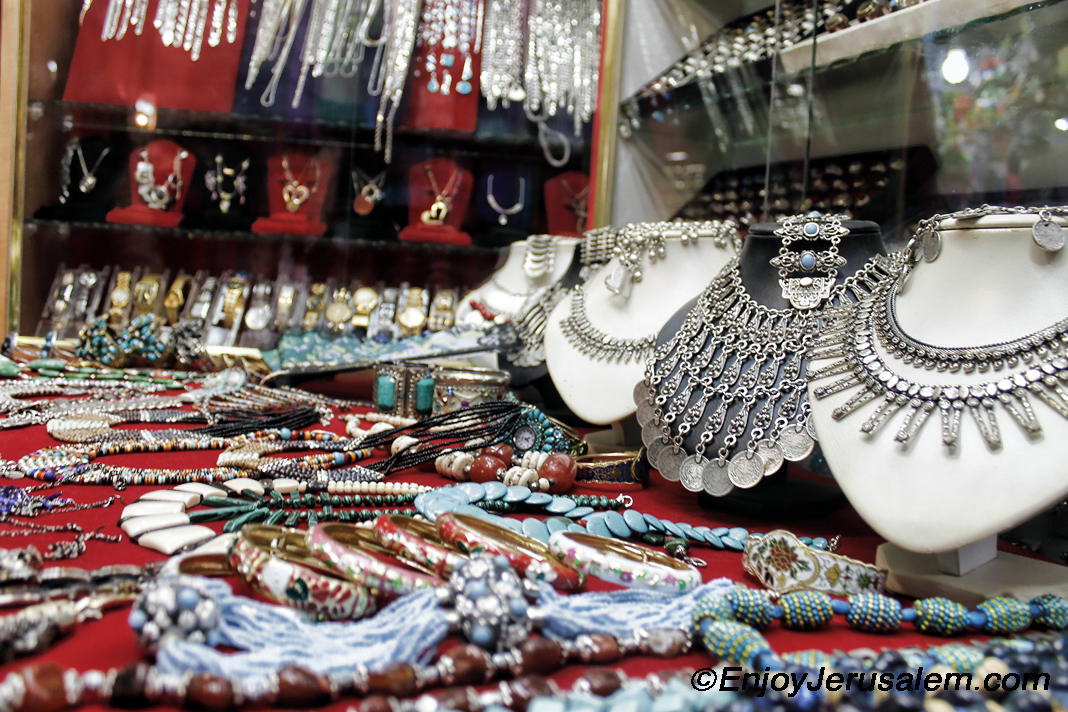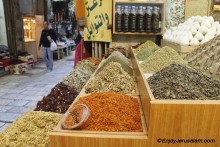Traditional and contemporary commercial life within the Old City of Jerusalem comes alive in its different markets. The fascinating atmosphere speaks a lot about the richness of “Souqs (markets) culture”. Introducing the architectural facets of the khans and the bazaars and the historical centers of commercial activity in the old city of Jerusalem, Suq Khan al-Zait is one of the most important markets to tell about.
Suq Khan al-Zait is a market that its northern end runs from a few meters south of Damascus Gate and crosses the city from north to south, ending at Zion Gate. During Roman and Byzantine eras, this road was called the cardo. It was renovated by Emperor Hadrian in 123 AD and extends to the end of Suq al-Attarin (spice market) today. When Emperor Justinian built the New Church towards the end 1. Suq Khan al-Zait 46 of the fifth century, he extended the cardo to the southern end of the Old City, where the Zion Gate is located today. The street is divided into a number of sections, each with a name and specialization. The first section is known as Suq Khan al-Zait (olive oil) and runs from the Damascus Gate intersection up to the beginning of Suq al-Attarin. Until the middle of the twentieth century, Suq Khan al-Zait had a number of olive presses and soap-making facilities. Each press had a large storage area for olive oil; this is most likely the source of the Suq’s name. Suq Khan al-Zait is long and lined with shops on both sides. It is tiled in typical Jerusalem stone paving. The first part of this Suq, extending from its start in the north to just before its intersection with Christian Quarter Road and Aqabat al-Mufti, is uncovered, but other sections of this Suq are covered by a stone roof that protects shoppers from the natural elements. The roof cover is formed of a series of lintels featuring cross vaults, in the middle of which are large openings for light and ventilation. This architectural fabric most likely dates back to the Mamluk era, although it appears to have been renovated on several occasions since then.
Suq Khan al-Zait and Suq al-Attarin follow on from each other immediately and are major thoroughfares of the Old City. Shops along Suq Khan al-Zait offer a wide variety of modern consumer goods catering for the needs of tourists and residents alike, including popular restaurants, confectionery and nut shops, falafel stands, butcheries, vegetable stands and souvenirs.
The Suq has inevitably lost its traditional specialization of soap manufacturing and olive pressing given the need to adapt to modern times. Roads and alleys branch off this Suq, connecting to the city’s east and west.
For further information about this site or getting an illustrative map or directions you can visit Jerusalem Visitor Guide Website



